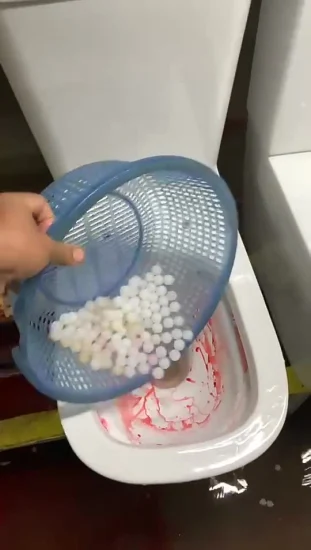Can You to Flush Food in the Toilet?
Can You to Flush Food in the Toilet?
Blog Article
We have stumbled upon this article involving Is it safe to flush food (especially rice) down the toilet? directly below on the web and felt it made sense to talk about it with you over here.

Intro
Many individuals are often faced with the issue of what to do with food waste, specifically when it involves leftovers or scraps. One common question that emerges is whether it's fine to purge food down the toilet. In this article, we'll explore the reasons why individuals may consider purging food, the effects of doing so, and different approaches for proper disposal.
Reasons that individuals might think about purging food
Lack of awareness
Some individuals might not recognize the prospective damage caused by flushing food down the toilet. They might wrongly believe that it's a safe method.
Benefit
Purging food down the toilet might feel like a fast and easy remedy to taking care of undesirable scraps, specifically when there's no neighboring garbage can readily available.
Idleness
Sometimes, people may simply pick to flush food out of large negligence, without thinking about the consequences of their activities.
Repercussions of flushing food down the bathroom
Environmental influence
Food waste that ends up in rivers can add to pollution and injury aquatic ecosystems. In addition, the water used to purge food can strain water sources.
Plumbing problems
Flushing food can lead to blocked pipes and drains pipes, creating costly pipes repair services and troubles.
Sorts of food that ought to not be purged
Coarse foods
Foods with fibrous structures such as celery or corn husks can get tangled in pipes and create blockages.
Starchy foods
Starchy foods like pasta and rice can take in water and swell, resulting in obstructions in pipelines.
Oils and fats
Greasy foods like bacon or food preparation oils must never ever be flushed down the toilet as they can solidify and create clogs.
Appropriate disposal techniques for food waste
Using a garbage disposal
For homes equipped with garbage disposals, food scraps can be ground up and flushed via the pipes system. However, not all foods are suitable for disposal in this manner.
Recycling
Particular food packaging materials can be recycled, decreasing waste and reducing ecological effect.
Composting
Composting is an environment-friendly way to get rid of food waste. Organic products can be composted and utilized to enrich dirt for gardening.
The relevance of proper waste monitoring
Decreasing ecological harm
Appropriate waste management methods, such as composting and recycling, aid minimize contamination and maintain natural resources for future generations.
Securing pipes systems
By avoiding the method of flushing food down the bathroom, home owners can prevent costly plumbing repair work and preserve the stability of their pipes systems.
Verdict
Finally, while it might be alluring to purge food down the bathroom for comfort, it is necessary to recognize the possible effects of this action. By adopting proper waste monitoring techniques and disposing of food waste sensibly, individuals can contribute to much healthier plumbing systems and a cleaner environment for all.
FLUSH FOOD DOWN THE TOILET?
FLUSHING FOOD CAN CAUSE BLOCKED DRAINS IN YOUR HOME
All of the plumbing fixtures in your home are connected to the same sewer pipe outside of your home. This outdoor sewer pipe is responsible for transporting all the wastewater from your home to the Council sewer mains. Even small pieces of food that go down the kitchen sink can cause problems for your sewer. It should therefore be obvious that flushing larger bits of food, such as meat, risks a clog in either the toilet itself or the sewer pipes. Flushing greasy food is even more problematic because oil coagulates when it cools, coating the interior lining of your pipes.
THE TOILET IS NOT A BIN
Food isn’t the only thing that people shouldn’t be flushing down the toilet. People use the toilet to dispose of all kinds of things such as tampons, makeup wipes, dental floss, kitty litter and even underwear. Water goes to great lengths to educate residents about the high costs and stress placed on wastewater treatment systems simply from people flushing the wrong stuff down the toilet. It costs taxpayers millions of dollars each year, and homeowners thousands in blocked drain repairs.
FLUSHING FOOD IS A WASTE OF WATER
Flushing food is a waste of our most precious resource - water. In June this year Level 1 water restrictions were introduced to protect water supply from drought conditions. Much of New South Wales continues to be affected by prolonged drought with recent figures revealing up to 97 per cent of the state remains in drought. Depending on whether you have a single or dual flush toilet, every single flush uses between five and 11 litres of water. In the current climate this is a huge amount of water to be wasting on flushing food that should be placed in the bin (or better yet, the compost).
https://www.jabplumbingsolutions.com.au/blog/can-you-flush-food-down-the-toilet

I was shown that report on through an associate on another web blog. Enjoyed reading our entry? Please quickly share it. Let another person locate it. I recognize the value of your readership.
Book Today Report this page